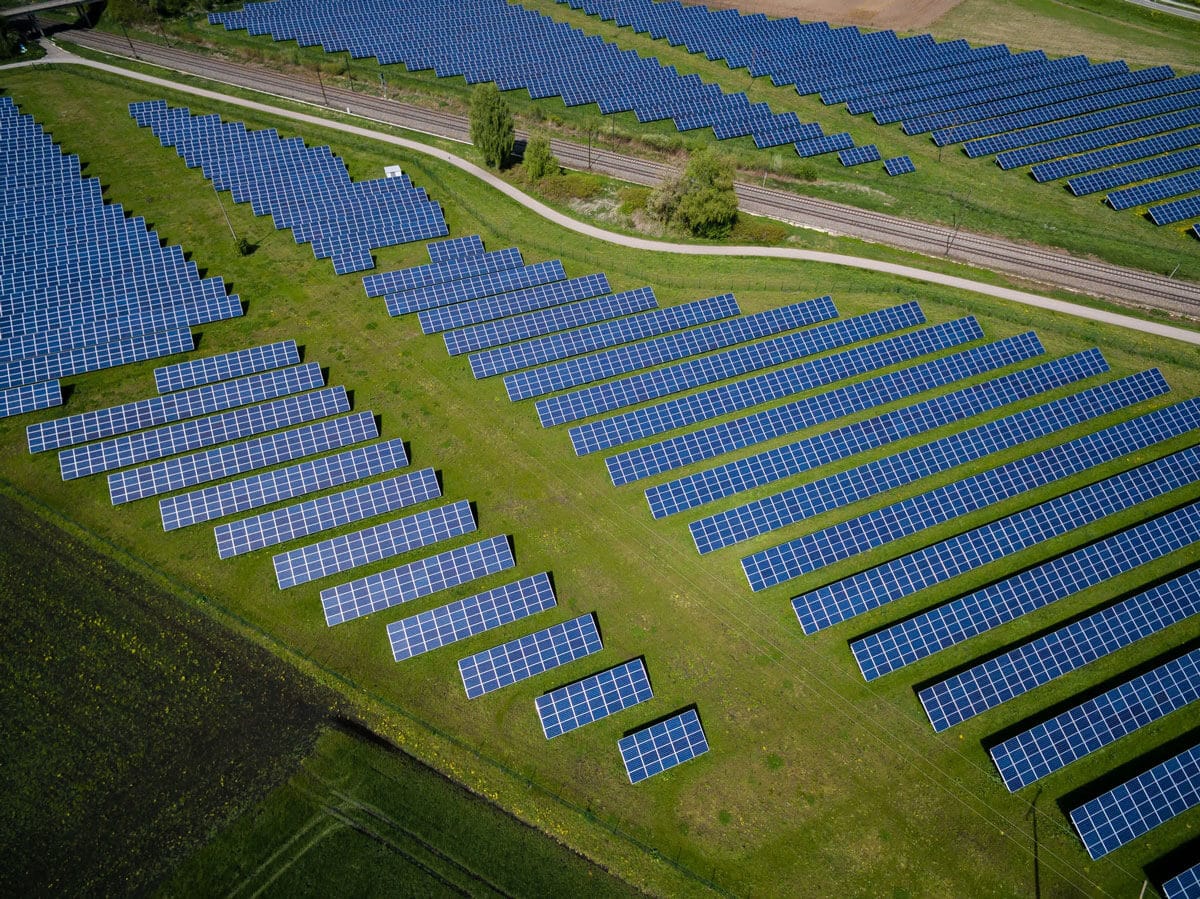
Environmental, social, and governance (ESG) compliance is an emerging topic across industries. But with new standards that often vary between regions, it can be challenging to prioritize your company’s initiatives and ensure that you’re complying with regulations.
Fortunately, the Sustainable Enterprise Tech Council brought in the experts to share insights on all things ESG compliance, from rules and regulations to best practices for companies of any size.
Most companies — especially smaller ones — don’t have the capacity or funds to shape their own sustainability group. On top of that, ESG is a broad area that encompasses many different aspects of its three pillars. So, how can you prioritize ESG initiatives when you have limited resources?
According to Marcia Narine Weldon, “It really is a matter of risk. Dealing with trade groups, industry groups, [and] others can keep you educated because you have to have pretty much a spreadsheet to figure out what's going to apply to you. But you have to take a risk-based approach.”
Because your ESG prioritizations will be specific to your company, you have to dig into the details of your operations. Look at your supply chain and devote time to your tier two and tier three suppliers. Additionally, you should look at where you’re operating. Are you operating in the EU? Are you a US company operating in the EU? Different regions have distinct regulations, and it’s crucial that you are aware of those specific to your company. Most importantly, you must figure out where your data is and how you get it. Almost all regulations are focused on disclosure, and if you can’t reach your data, you won’t be able to report it accurately.
As the climate change crisis heightens and people become more aware of environmental sustainability impacts, many companies are working to reach net zero emissions. Along with this, new standards of compliance are being set in place.
A decade ago, companies had to submit data on different areas like packaging and waste electronics, but today, much more information is required. The shift came around 2015 with the introduction of the EU Circular Economy package, which then spread globally. But the real shift was around 2018 when there was a major focus on plastics, plastic waste, and how we recycle. Today, companies have to report more data and become more transparent regarding their recycling, emissions, and waste operations.
“When we are audited,” Emma Mundy explains, “the sheer volume of information and data that is required of us is — all these new requirements are coming in, and they're only getting more onerous.” As a sustainability professional who has seen the changes over the last decade, Emma goes on to say, “We have to set KPIs in some countries on reducing our consumption and showing how much we're recycling certain products and packaging. And we have to track the data on those things.”
As ESG regulations and standards progress, companies often wonder: how strict is the enforcement?
Regulation and enforcement vary by country, but typically, the enforcement isn’t used as a scare tactic — it’s put in place to help you comply. Authorities see the bigger picture and want companies and the rest of the world to progress toward a more sustainable future.
Typically, enforcement comes in the form of fines for non-compliance or reporting inaccurate data. Brendan Walsh says that “in Europe, [the fines] can be quite significant for their own privacy-related breaches. In certain instances, you can be looking at fines up to 10% of global revenue. So for Google, Microsoft, [and] Apple, that is enormous. They take them very seriously. The other aspect, clearly, is the reputational risk that goes along with it.”
The consequences of ESG non-compliance often depend on your region and the size of your company, but overall, it’s essential to abide by the regulations. That way, your company not only upholds its reputation and avoids fines but also works toward a better future.

Data centers provide solutions for organizations to store, process, and disseminate their IT operations and equipment. But, according to Brendan Walsh of World Wide Technology (WWT), the carbon “emissions from data centers are now very close to those from the airline industry,” making them the fifth largest electricity consumer worldwide. From a business standpoint, David Locke, EMEA Chief Technology Advisor at WWT, says that data centers comprise 20-25%, sometimes up to 40%, of a company’s total energy consumption.
So, what are some strategies you can establish to reduce your carbon footprint and reach net zero emissions?
Companies are often unaware of how much energy their data centers use. In today’s fast-paced business environments, day-to-day practices exacerbate consumption and emissions. It’s common for organizations to run multiple servers at a time, leave them running after hours, and overlook idle appliances.
How can you offset your operations to advance toward a carbon-neutral data center?
As a start, companies can analyze their datasets to determine how they’re expending energy. With a data analytics strategy, you can evaluate your servers for energy efficiency and power usage. This method also allows you to identify the location of your workloads and the use cases for each one to regulate carbon emissions. By taking a pragmatic approach to sustainability and disseminating your business functions, you can make informed decisions to develop efficient practices.
One seemingly apparent practice would be to use renewable energy sources to balance consumption and carbon emissions. Yet, these sources make up only 20% of electricity generation in the US and, as a result, are not sufficient enough to sustain power for each function in an organization.
Instead, businesses should optimize their software to minimize excessive usage. David asserts that “the average utilization of a server inside an enterprise organization is around 30-40%.” Transferring your workload to the cloud allows you to manage your overhead and increase energy efficiency by 85-90% in your overall business environment.
Alternatively, companies can employ other procedures to consolidate, update, and modernize their technologies to reduce electricity.
VMware provides a viable option for organizations to consolidate their workloads and maximize data center efficiencies. This technology implements virtualization services to operate multiple workloads simultaneously. Additionally, it provides the opportunity to monitor each user’s energy consumption, so businesses can actively measure power and usage.
By applying VMware to your environment, you can develop practical goals to reduce consumption and emissions and attain net zero.

Over 40% of a data center’s energy is spent on cooling. That’s why BWG’s Sustainable Enterprise Technology Council is on a mission alongside World Wide Technology to target cooling practices in the tech space.
So what are the most sustainable and cost-efficient cooling technologies? Should your enterprise change its cooling methods?

One common cooling method is immersion cooling. This is where you take all of the fans out of the computer and put them into a tank of nonconductive fluid — what Don Molaro describes as “essentially baby oil” and other chemicals. This method is improving over time, but there are still some drawbacks.
Another method is direct-to-chip liquid cooling. In this practice, you replace the heat sinks on various components of the system, typically the CPUs, GPUs, and other auxiliary units that produce a lot of the heat. Then, you use a fluid to draw the heat out directly from those components. From there, you radiate the heat out to other parts of the data center.
How does air cooling compare to liquid cooling?
As CPUs and GPUs become more power-intensive, air cooling is going to become less efficient. Don explains, “it's going to be hard to blow that amount of air efficiently — or at all — to cool those components.” So, as technology advances, companies may want to shift gears toward liquid cooling instead.
Don also notes that there’s a lot of research to be done in this space yet, but many innovative companies are now taking a hybrid immersion cooling approach, where they’re only using a tank suitable for a single system. And as more companies employ high-density computing, many are turning toward liquid cooling methods upon realizing that fans are no longer efficient.

The future of cooling and sustainability really comes down to companies optimizing their systems and understanding how much their infrastructure costs.
To aid enterprises in their sustainability journey, World Wide Technology is offering consulting spanning three practice areas: sustainable technology, ESG consulting, and ESG data and AI. Brendan Walsh says that these practice areas, “[were] launched following quite a considerable amount of research and strategy development, looking at customer needs, what was out there, [and] looking at [World Wide Technology’s] assets.”
Because cooling and sustainability are such significant targets and opportunities, the team at World Wide Technology is building out unique resources and labs to help each enterprise reach a net-zero target.

Climate change is already showing its impact across the globe, with extreme weather patterns and rising waters posing risks to people, animals, and all other life forms. And these dangers are only increasing in pace and scope. By 2026, climate-related weather events are expected to cost businesses 1.3 trillion dollars.
When it comes to the technology industry, is there anything we can do to lower the carbon footprint and reach net-zero? That’s why the Sustainable Enterprise Technology Council was formed.
Founded by BWG Connect and World Wide Technology, the Sustainable Enterprise Technology Council (SETC) is an organization on a mission to promote sustainability and reduce the carbon footprint of the enterprise technology industry.
The SETC aims to be a collaborative organization, bringing in various voices from companies big and small, creating a community to participate in building initiatives. The SETC preliminary topics include more efficient computing, data center design and retrofitting, site selection, efficient cooling, managing carbon credits, and renewable energy. According to Founding Partners Greg Irwin and Brendan Walsh, they want issues to be driven primarily by the community.

Environmental, Social, and Governance (ESG) initiatives play an important part in lowering the carbon footprint. The objective is to recognize the effect companies have on the environment and society as a whole.
In terms of ESG, the current main focus is on the environmental side. Much of it comes down to greenhouse gas emissions and reporting. These emissions are measured in scope across three categories. Scope one is what you generate yourself or what your individual organization generates. Scope two is what you purchase from the grid. And scope three is the entire value chain of your organization's business. Most Fortune 1000 companies have only been required to report scopes one and two. In many cases, scope three was not a regulatory requirement — and still isn’t today. However, to get a science-based net-zero target approved, an organization has to report and disclose its scope three emissions. Clearly, this is a critical factor as the SETC looks to help organizations reach their net-zero targets.
But it’s not just about the companies. On the consumer side, Brendan says that “more than half of consumers are willing to change their purchasing habits to have a strong, credible environmental impact. And almost 80% of them believe that it's important for brands to offer an environmentally clean product.”

There’s an urgency to be carbon neutral, but facing this goal is daunting — especially in the tech space. How do you take a data center that’s driving petabytes and consuming tremendous amounts of power and get to carbon neutral?
Fortunately, there are actionable steps you can take in the right direction. With a focus on sustainable technology, strategy consulting, and data and AI, the SETC is helping organizations chart a path to net-zero.
Under sustainable technology, the SETC will have offerings such as quantum simulation as a service (essentially executing processes faster), sustainable digital infrastructure, and a sustainability lab for both testing and optimization. In terms of strategy consulting, the SETC is well placed to help progressive organizations and those just starting out in a sustainability journey by providing baseline metrics and target settings. In regard to data and AI, there are opportunities for sustainable AI-based data centers, and the SETC has some of these offerings already in place.
Whether you believe carbon neutrality is possible or not, the important thing is to take steps toward this goal. Because lowering the carbon footprint by 10% is better than nothing, and if everyone takes part, we’ll see a massive shift in the right direction.